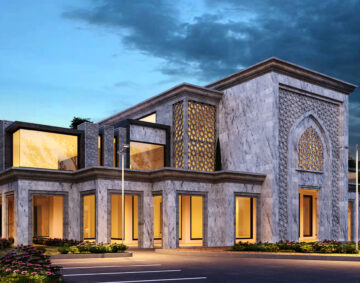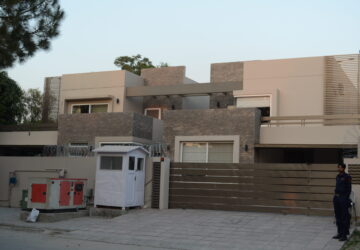ARCHITECTURE INSIGHTS
ABOUT NEESAUN ZARBAKHAT ARCHITECTURE
We look forward to doing great things with you anywhere in the world.
Choosing the Right Architectural Style
Architectural style refers to the distinctive characteristics and features of a building or structure. It encompasses various elements such as form, materials, ornamentation, and historical context. There are countless architectural styles, each with its own unique aesthetic and cultural significance.
Popular Architectural Styles
Here are some of the most popular architectural styles:
Modern Architecture:
- Key Characteristics: Clean lines, geometric shapes, and a focus on functionality.
- Influential Figures: Le Corbusier, Mies van der Rohe, Walter Gropius
- Examples: The Farnsworth House, the Seagram Building, the Guggenheim Museum Bilbao
Postmodern Architecture:
- Key Characteristics: A rejection of modernist principles, often characterized by eclecticism, irony, and historical references.
- Influential Figures: Robert Venturi, Philip Johnson, Frank Gehry
- Examples: The Pompidou Center, the Getty Center, the Guggenheim Museum Bilbao
Sustainable Architecture:
- Key Characteristics: Focus on environmental sustainability, energy efficiency, and resource conservation.
- Influential Figures: Norman Foster, Bjarke Ingels, Jeanne Gang
- Examples: The Eden Project, the Bullitt Center, the Shanghai Tower
Minimalist Architecture:
- Key Characteristics: Simplicity, functionality, and a focus on essential elements.
- Influential Figures: Ludwig Mies van der Rohe, Philip Johnson, Tadao Ando
- Examples: The Farnsworth House, the Barcelona Pavilion, the Chapel of Light
Traditional Architecture:
- Key Characteristics: Adherence to established styles and principles, often with historical references.
- Influential Figures: Christopher Wren, Thomas Jefferson, Frank Lloyd Wright
- Examples: Monticello, the Taj Mahal, the Parthenon
Other Notable Architectural Styles:
- Art Deco: Characterized by geometric shapes, bold colors, and luxurious materials.
- Gothic: Known for its pointed arches, flying buttresses, and ornate details.
- Renaissance: Inspired by classical architecture and characterized by symmetry, balance, and harmony.
- Baroque: Emphasizes drama, movement, and ornamentation.
- Rococo: Known for its ornate details, delicate curves, and playful atmosphere.
Choosing the Right Architectural Style:
The choice of architectural style depends on various factors, including personal preferences, the building’s purpose, and the surrounding environment. Consider the following questions when selecting a style:
- What is the overall mood or atmosphere you want to create?
- What are the functional requirements of the building?
- What is the budget for the project?
- What is the local architectural context and style?
By carefully considering these factors, you can choose an architectural style that is both aesthetically pleasing and functional.
Architectural Art: Where Design Meets Creativity
Architectural art is the intersection of architecture and fine art, resulting in buildings that are not only functional but also visually stunning and expressive. It involves incorporating elements of art, sculpture, and design into the built environment, creating unique and memorable spaces.
Key Elements of Architectural Art:
- Sculpture: Incorporating sculptures, statues, or other three-dimensional art pieces into the architectural design.
- Artwork: Displaying paintings, drawings, or other visual art pieces within the building.
- Materials: Using materials with artistic qualities, such as marble, granite, or stained glass.
- Lighting: Employing creative lighting techniques to highlight architectural features and create a desired atmosphere.
- Landscaping: Integrating landscaping elements that complement the architecture and create a harmonious outdoor space.
The Benefits of Architectural Art:
- Enhances Aesthetic Appeal: Architectural art can add visual interest and beauty to a building, making it more memorable and enjoyable.
- Creates a Unique Identity: Incorporating artistic elements can give a building a distinctive identity and set it apart from others.
- Encourages Creativity: Architectural art can inspire creativity and innovation among architects, designers, and artists.
- Enhances the User Experience: Architectural art can create a more engaging and enjoyable experience for people who use the building.
Examples of Architectural Art:
- The Guggenheim Museum Bilbao: This iconic building features a curvaceous form and unique metallic exterior, making it a masterpiece of architectural art.
- The Sagrada Família: This unfinished cathedral in Barcelona is a stunning example of Gothic architecture, adorned with intricate sculptures and stained glass.
- The Chrysler Building: The Art Deco skyscraper features a distinctive crown adorned with gargoyles and a spire, making it a landmark of New York City.
Architectural art is a powerful tool for creating truly exceptional buildings. By combining architectural design with artistic elements, architects can create spaces that are both functional and inspiring.
Architectural Plans: The Blueprint for Your Project
Architectural plans are essential documents that provide a detailed blueprint for the construction or renovation of a building. They serve as a visual representation of the proposed design, outlining the layout, dimensions, materials, and structural elements.
Key Components of Architectural Plans:
- Floor Plans: Detailed drawings that show the layout of each floor, including rooms, hallways, and staircases.
- Elevations: Drawings that show the exterior appearance of the building from different angles.
- Sections: Cross-sectional views of the building that reveal the internal structure and materials.
- Details: Close-up drawings that provide specific information about materials, finishes, and construction techniques.
- Schedules: Tables that list materials, finishes, and other specifications for the project.
Benefits of Architectural Plans:
- Clear Communication: Architectural plans provide a clear and concise way to communicate design ideas to clients, contractors, and other stakeholders.
- Cost Savings: Well-prepared plans can help to avoid costly mistakes during construction.
- Time Efficiency: Architectural plans can help to streamline the construction process and reduce delays.
- Quality Control: Architectural plans can help to ensure that the final product meets the desired quality standards.
Creating Architectural Plans:
The process of creating architectural plans typically involves the following steps:
- Client Consultation: Architects work closely with clients to understand their needs, preferences, and budget.
- Site Analysis: The architect assesses the site conditions, including the topography, zoning regulations, and existing structures.
- Conceptual Design: The architect develops initial design concepts based on the client’s requirements and the site analysis.
- Schematic Design: The architect refines the design and creates more detailed plans, including floor plans, elevations, and sections.
- Design Development: The architect finalizes the design details and prepares working drawings for construction.
Architectural plans are an essential component of any construction project. They provide a clear and detailed blueprint for the design, construction, and maintenance of a building. By working with a skilled architect, you can ensure that your project is well-planned and executed to the highest standards.









